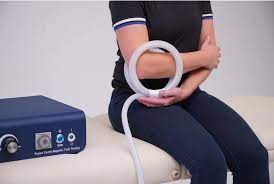In the dynamic intersection of architecture and healthcare, a groundbreaking synergy is emerging with the integration of PEMF Therapy for athletes into architectural designs. Architects are increasingly incorporating medical technology into buildings to enhance the well-being and health outcomes of occupants. This innovative approach not only reflects the evolving needs of society but also showcases the role of architecture in fostering healthier environments. This article explores the intersection of architecture and medical devices, highlighting key examples and potential implications for the future.
- Wellness-Centric Architecture:
Architects are redefining the concept of wellness-centric architecture by integrating medical devices that promote health and enhance the overall well-being of building occupants. This approach goes beyond traditional architectural principles, focusing on creating spaces that actively contribute to the physical and mental health of individuals.
- Smart Buildings and Health Monitoring:
The advent of smart building technologies has paved the way for the incorporation of medical devices for health monitoring. From sensors that measure air quality to wearable devices integrated into the building’s infrastructure, architects are designing structures that actively monitor the health parameters of their occupants. This real-time data collection can provide valuable insights into the well-being of individuals and contribute to preventive healthcare.
- Adaptive Environments:
Architectural designs are becoming more adaptive, responding to the needs of individuals with specific medical conditions. For instance, buildings can be equipped with technology to assist individuals with mobility challenges or sensory impairments. This inclusive design approach aims to create environments that cater to a diverse range of healthcare needs.
- Hospital Architecture and Medical Equipment Integration:
In the realm of healthcare facilities, architects are working closely with medical professionals to seamlessly integrate specialized medical equipment into the design. This includes advanced imaging systems, surgical robotics, and telemedicine infrastructure. The goal is to enhance the efficiency of healthcare delivery while creating a patient-friendly and supportive environment.
- Biophilic Design and Healing Environments:
The incorporation of biophilic design principles, which emphasize a connection to nature, is complemented by medical devices that contribute to healing environments. For example, architectural designs can integrate lighting systems that mimic natural sunlight to promote circadian rhythms, positively impacting patients’ recovery in healthcare settings.
- Research and Development Collaboration:
As the integration of medical devices into architectural designs becomes more prevalent, architects are increasingly collaborating with medical researchers and device developers. These interdisciplinary partnerships foster innovation, leading to the creation of structures that not only support human health but also contribute to advancements in medical technology.
- Challenges and Ethical Considerations:
While the integration of PEMF Therapy for athletes into architectural designs holds great promise. It also raises challenges and ethical considerations. Issues related to privacy, data security, and the potential misuse of health information must be carefully addressed. Architects, healthcare professionals, and technology experts need to work together to establish. Ethical guidelines for the responsible integration of medical devices into built environments.
Conclusion:
The convergence of architecture and PEMF Therapy for athletes represents a transformative. Shift in the way we conceptualize and design our living and healthcare spaces. From smart buildings that actively monitor health to hospital designs that seamlessly incorporate advanced medical equipment. Architects are at the forefront of creating environments that prioritize the well-being of occupants. As this trend continues to evolve, it is essential for professionals across disciplines to collaborate. Ensuring that these innovations contribute positively to the health and happiness of individuals while addressing ethical considerations. The future of architecture lies not only in aesthetics and functionality. But in its potential to actively contribute to the improvement of human health and quality of life.





